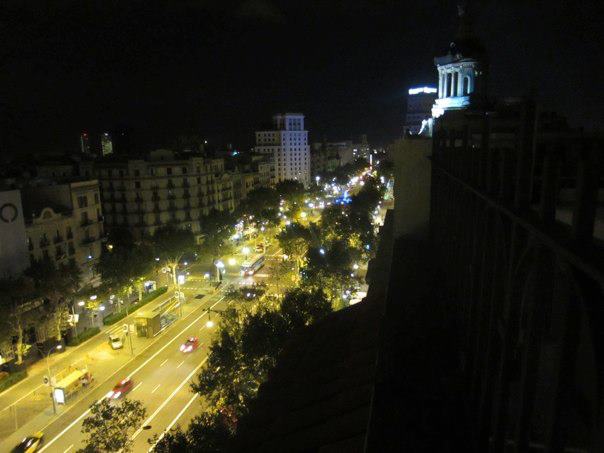It was a warm Friday evening in Barcelona, and a sultry air swept in from the Mediterranean. The Catalan capital was psyching itself up for another exuberant weekend. All the way up and down the Ramblas bars and cafes were starting to fill with revellers and socialites. Passeig de Gracia, the city’s most elegant thoroughfare, was teeming with locals and tourists, all pounding the pavement of this exciting metropolis in search of fun and festivity. The residents of this town worked hard all week. Every morning at 8am the Metro was thronged with commuters. Twelve hours later, many of these same people were wearily making their way home after a tough slog at the office, ready to do little more than enjoy a late meal and an early night. But Friday night was different. This was the entry point into a paradise that would last for forty eight hours before the grind of work began again. For those two days this city – from the peaks of Tibidabo in the west, to the beaches of Barcelonetta in the east – would become the party capital of the Universe. And nobody could party better than the Spanish.
The clock turned 10:30 pm and I was leaning out the window of my kitchen, gazing at the courtyard of makeshift vegetable plots down below. I was right in the middle of this happening town, just a thirty minute walk from the epicentre of entertainment, but I wasn’t going to be painting the town red that night. Instead I was preparing for a radical overhaul of my life. I took several deep drags of my cigarette and then extinguished it and lit another. I puffed on this one quickly until it burned down to the butt and lit a third. I took more time with this one. My mouth was dry and dusty, and each inhalation only exacerbated these ugly sensations, but I did my best to savour every pull. I looked at the cigarette in my nicotine stained fingers, and I reckoned I had only one more drag before it would expire. I took the final puff, let the smoke flow down into my tarred lungs where it sat momentarily before I exhaled and watched it dissipate into the musty night air. The box of cigarettes was now empty and I wasn’t planning to fill it again. That was Friday the 13th of October, 2000. The next day would be the first day of the rest of my smoke-free life.
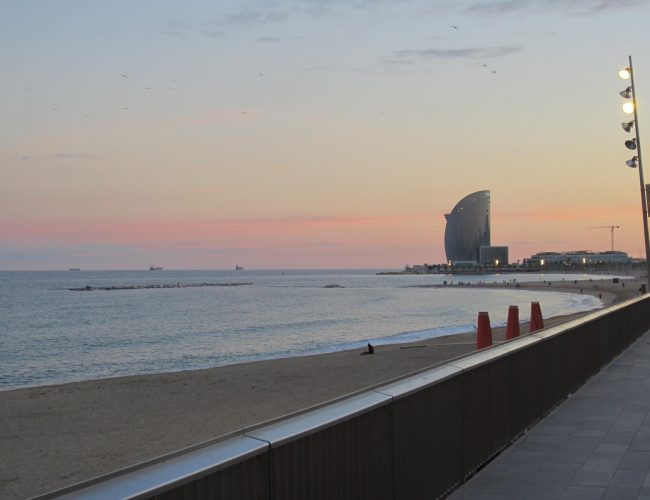
I awoke the next morning with the worst feeling any smoker can experience – the knowledge that you have no cigarettes to tie you over until breakfast. Most smokers would gladly leave the house in their pajamas to stock up under such circumstances. I had to resist such an urge. Then, withdrawal symptoms kicked in. Cravings started to rise. I missed my beloved cigarettes, the toxic partner I’d been in a relationship with for 8 years. In the moments when my body wasn’t demanding its nicotine fix my mind was trying to fathom what my life would be like without always having cigarettes by my side. It would be unbearable. I’d be constantly at the mercy of temptation. Any time I’d be in the company of smokers I’d witness them joyfully imbibe the smoldering fumes of the mature tobacco leaves grown on the southern facing slopes of the Blue Ridge mountains of Virginia, and I would seethe in jealousy as I’d watch their pleasure. My standard pick me up when I was tired or bored or sad or lonely or anxious or happy was being taken away from me. Life was going to become unbearable. My vision was becoming blurred. I was getting restless. There was only one cure for all these ailments.
I might have quickly succumbed had I not been lucky to be surrounded by supportive people who assured me my life would improve in countless ways as soon as I severed the tie with that demon nicotine. I’d read Allan Carr’s famous book, which claimed that a smoke-free life was one filled with boundless possibilities. My senses would improve, food would become tastier, I could breathe deeply without coughing, I would be able to walk up a flight of stairs without gasping for air. I would literally be able to smell the roses. All these things sounded very positive, yet simmering beneath the surface of my skin, pulsing through my veins, and tingling within every nerve and fibre of my being, those nicotine cravings still cried out, “FEED ME!”. I ignored them. I fought them. My flatmate and friend, Chris, suggested we go for a walk. I took his advice. Walking was just the thing to distract me now.
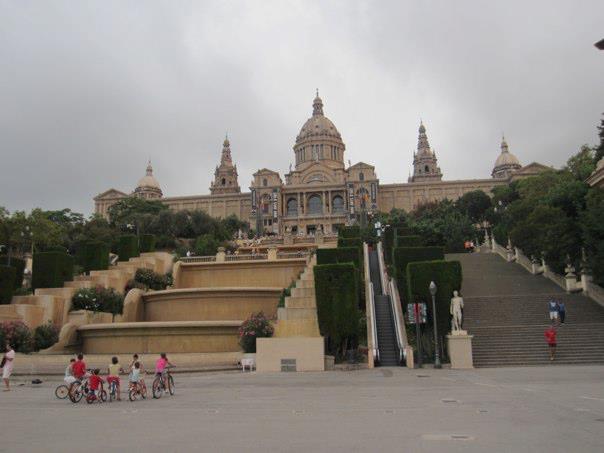
The weekend ended. The city got back into its normal routine. I returned my work as an English teacher too. I was a bundle of nerves, edgy, apprehensive, but I was also hopeful. I was hopeful that I could wrestle with this bear that had enslaved me, and I believed I could be free of it for once and for all. Those first two days were the hardest. Day three was a little easier, but then day four threw up a few challenges. At the time I lived quite near Placa Espanya, which lay in the shadow of the imposing Palau Nacional on the hill of Montjuic. It was a bit of a climb to get up to the Palace, but the views of the city from the top were spectacular. When I normally arrived home from work I would polish off a couple of cigarettes to celebrate the end of my working day, but that avenue was now closed to me. I felt the frustration from that realisation start to raise my blood pressure, so I headed off in the direction of the Palau Nacional and released all those demons as I charged up the steps to the top. When I had done so, the cravings had abated. My pulses were charging, my heart was beating faster, and I actually felt good. Not the kind of good one feels when one has a long desired cigarette, but a goodness that felt healthy. I hadn’t ever really realised before that exercise could be, what’s the word, fun.
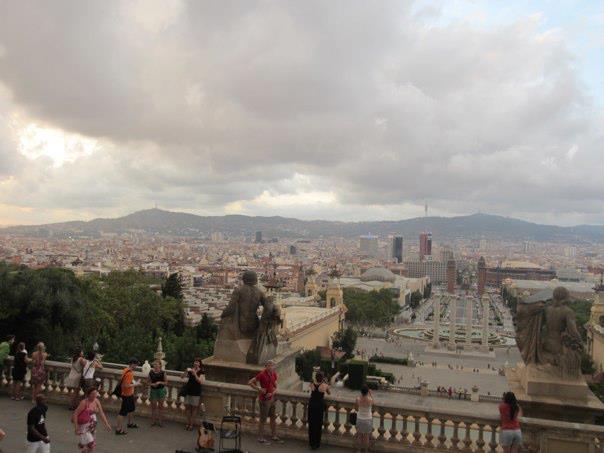
In the weeks that followed my last cigarette I did find that my life was improving, or at least I chose to believe it was. My energy levels were starting to explode as well. Now that I was no longer a smoker I was finding ways to explore the world anew. My feet could carry me much further than they ever had before. I made a habit of running up the steps to the Palau Nacional several times a week, while at weekends I went for long walks to explore all the nooks and crannies of Barcelona. Walking two or three kilometres home from work became a much more pleasant act. For the first time in my life I wanted to be outdoors and I actually enjoyed moving, now that my circulatory system wasn’t slowed down by massive tar deposits. While I’d initially thought that a life without cigarettes would be unbearable, it looked like I’d survive very well without them. Everything positive thing I’d heard about how my life would change was true. I was fitter, healthier, wealthier and had greater peace of mind. I no longer had to contend with issues such as smoking restrictions in public places, price hikes on budget day, or the increased likelihood of succumbing to some smoke related terminal illness. I was free of all that forever.
My time in Barcelona came to an end a few months later, and I returned to my home town of Cork in the south of Ireland. To the natives, Cork is the centre of the Universe and the real capital or Ireland. It’s the home to the world famous Blarney Stone, Ireland’s tallest building, straightest road, the Titanic’s last port of call, the ancestral home of Henry Ford, and a city that boasts two world class brands of stout to Dublin’s one. Visitors who come to the city are reminded of its uniqueness at every available opportunity. However, all was not quite so serene on Leeside. It was the year 2000, and the heart of the city was being torn apart because of the building of a new drainage system. The city’s main thoroughfare, Saint Patrick’s Street, was a very elegant place in its prime, but in its present condition the contrast with Passeig de Gracia could not have been greater. The roads and footpaths were being torn apart, huge barriers had been erected, making the city centre look more like a war zone than a shopping district. Trying to get from one side of Patrick’s Street to the other required negotiating a series of obstacles, hurdles and detours, which added about 3 kilometres to a journey. I was certainly glad I’d given up smoking.
Despite its flaws and its scars Cork was my home, and I was glad to be back in the city of my birth. In the weeks and months after my return I started to explore more and more of my city on foot. Routine walks that I had taken in the past now seemed very short, and so I needed to stretch my legs even further. Much to the consternation of my lazy dog, vigorous nightly walks became my norm. More remote parts of the city were now falling within my ever expanding radius. Lots more things become visible when walking than when travelling in a car, and I enjoyed the experience of viewing my city through new eyes. I sought out places I hadn’t seen in years. Cork has a multitude of hills which in my smoking days would have been a deterrent, but now I relished the prospect of climbing to their apexes and enjoying the sights from the top. And yes, I was a little bit smug about the whole transformation too.
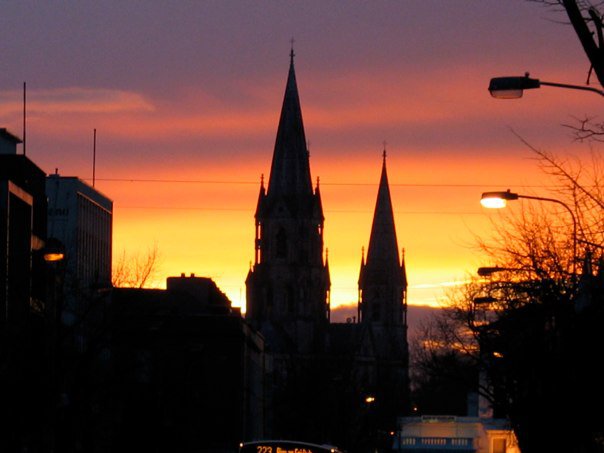
With the beast of smoking firmly buried, and no hint of any relapses, I found my finances had become significantly healthier as well. With all this cash burning a hole in my pocket I decided to go back to Barcelona and revisit the city to celebrate the first anniversary of my quitting. I had only lived there for three months in the year 2000, but I had developed a great love for the Catalan capital, and for Spain as well. Although I had only a small amount of the language, I could still appreciate the warmth and friendliness of the people. Spain was a country with such a rich history and diversity of culture, and the brief tapas-like taste I’d received of it left me hungry for more. A country that sprawled from the Atlantic to the Mediterranean, with a variety of deserts, plains, mountains, vineyards and lush green pastures in between, whose cities boasted a vast array of Moorish palaces, Gothic cathedrals and Modernist masterpieces, this was a country that was calling out to me to come and explore.
When I arrived back in Barcelona I was greeted by my friend and former flatmate, Chris, whose encouragement had helped me negotiate the diet of cold turkey the year before. He too had managed to escape from the clutches of that filthy addiction before I had, and so his actions served as an inspiration to me. I thought I had been a martyr for cigarettes, but he had put me to shame. If I smoked like a chimney, Chris smoked like a small industrial town in 19th century Northern England. So if he could quit, I could quit, and if I could quit, anyone could.
Chris and I went for a walk the first night I got back, and we tore up the steps of Montjuic to savour the view from the Palau Nacional and revisit some of our old haunts nearby. Chris mentioned that I had just missed a mutual friend of ours, who had been staying with him for a few days while passing through Barcelona. Chris said our friend was on his way to do something called the Camino de Santiago.
I hadn’t the faintest idea of what the Camino de Santiago was. I couldn’t even pronounce it. Chris then told me it meant ‘The Way of Saint James’, and it was an old pilgrimage route that ran across the north of Spain to the city of Santiago, which was considered one of the holiest cities in Christianty. People walked this 800 KM path and stayed in simple shelters along the way whilst carrying all their belongings with them. In my smoking days I would have laughed heartily at such a ridiculous idea, before the excessive mirth caused me to cough up half a lung. But now that I had started to enjoy walking this idea seemed strangely appealing. People seemingly did this camino thing as part of a spiritual or personal journey of discovery. The long walk was supposed to help them solve their dilemmas and clarify their purpose in life. It sounded like it might be just the thing for me. The seeds of a great oak were being sown deep in my subconscious.
I asked some of my Spanish colleagues about this Santiago walk and they all knew about it. It seemed to be quite a popular activity as lots of my Spanish friends were familiar with someone who had done at least a part of it. It took about a month to complete the whole thing, while those who didn’t have that kind of time to spare walked for about a week. No one who went on it was unchanged by their experience. The route began in the Pyrenees and followed a path across the northern plains, through the mountains into the rain swept region of Galicia, before ending in the city of Santiago de Compostela, where legend claimed the bones of the apostle St. James were stored. My desire to see more of Spain, my new found love of walking, and the need to answer all the existential questions in my life all seemed to converge on this pilgrim route called the Camino de Santiago.
I spent nine pleasant days in Barcelona that year. The trip was an encore to my longer working holiday from twelve months earlier, and like any encore it provided an appropriate conclusion to my relationship with that city. As I was about to take the train to the airport, I took one last look up Rambla Catalonia where I caught a glimpse of Tibidabo, the tantalising church on the faraway hill. Perched on the city’s highest point like a medieval rocket about to blast into space, its prominent position means it is visible from all parts of Barcelona. It’s one of the first places you see when you arrive, the last place you see as you leave, and it’s rarely out of sight wherever you are in that town. Despite its omnipresence, it is much further away than it looks and quite difficult to reach. I had tried climbing up the hill to get to it the previous week, but after an hour it was still a significant distance away so with night coming I decided to turn around and walked back. I wasn’t sure now when I would ever see it again, so I waved goodbye in its direction and headed for the airport.
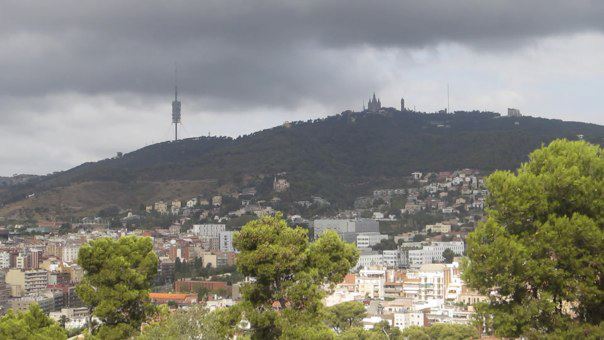
It was 2004 when I saw Tibidabo again. It first came into view as my flight skimmed down the Costa Brava and made its descent into the unfortunately named El Prat Airport in Barcelona. Most of my friends who had resided there when I was a newly minted ex-smoking English teacher had now ended their extended sabbaticals in Catalonia and departed for other lands. Tibidabo was the only familiar face to welcome me back to town and I was glad to be here again, if only for a fleeting visit. This time I wasn’t here to work, nor for a holiday, so I had packed differently. Instead of a suitcase I’d brought a large backpack and two collapsable walking poles. I had finally responded to the call to walk the Camino de Santiago. I was actually going to cover 800 KM of Spain on foot. This would have been so totally out of character for me a few years earlier. The decision to follow the Way of Saint James was one small step for a man but one giant leap for yours truly, and with that giant leap I was about to head off into the great unknown. I was terrified of all the things I thought might go wrong, and even more frightened about all the things I hadn’t thought about. But what about all the things that could go right? I had done my research about the route and had a general idea of what to expect about the walking conditions and the places to stay. Beyond that I had no idea what I was getting myself into. However, the die was now cast and there was no going back. My life would never be the same again.
